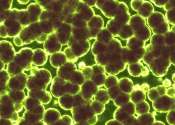Chemists use DNA to build the world's tiniest antenna
Researchers at Université de Montréal have created a nanoantenna to monitor the motions of proteins. Reported this week in Nature Methods, the device is a new method to monitor the structural change of proteins over time—and ...









